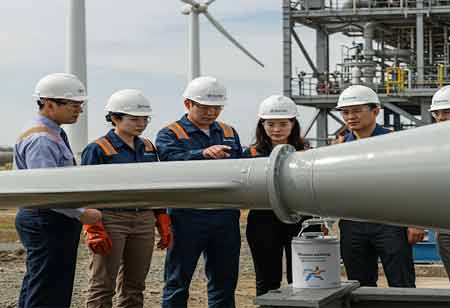Thank you for Subscribing to Construction Business Review Weekly Brief
Specials
- Apartment and Condominium Contractors Canada
- Decking Canada
- Architectural Glass Europe
- MEP APAC
- Construction Saudi Arabia
- German Apartment and Condominium Contractors
- Construction Law APAC
- Outdoor Construction
- Foundation Construction Canada
- MEP Canada
- Kitchen and Bath
- Cold Storage Construction APAC
- Precast Concrete Europe
- Construction Staffing Europe
- Pre-Construction Services
- Flooring System APAC
- Scaffolding Canada
- Swimming Pool Construction Canada
- Construction Management Canada
- Cold Storage Construction Canada
- Flooring Systems Europe
- Residential Construction
- Concrete Canada
- Construction Cladding Europe
- Construction Cladding APAC
- Concretes, Aggregates and Construction Materials APAC
- Concretes, Aggregates and Construction Materials Europe
- Commercial Contractors Europe
- Commercial Contractors APAC
- Dummy
- Construction Insulation, Coating and Waterproofing
- Construction Management APAC
- Landscaping Canada
- Construction Coating Europe
- Construction Tech Startups Europe
- Insulation Services Europe
- Mechanical Contractor Canada
- Mould Remediation and Testing Europe
- Swimming Pool Construction APAC
- Building Sealing Solutions Europe
- Construction Engineering Services
- Mechanical Electrical and Plumbing
- Roofing Systems Europe
- Architectural Glass APAC
- Startups APAC
- Construction Forensic and Owners Representative
- Flooring System
- Waterproofing APAC
- Wall Systems
- Safety and Compliance Europe
- Construction Equipment
- Modular and Prefab Construction
- Architectural Glass
- Construction MENA
- Construction Demolition and Recycling Europe
- Modular Construction Europe
- Construction Interiors
- Steel Building APAC
- HVAC
- Doors and windows
- Modular Construction APAC
- Building Information Modeling APAC
- Sustainable Construction APAC
- Building Restoration and Maintenance
- Commercial Contractors
- Specialty Construction
- Construction Engineering Canada
- Construction Engineering MENA
- Modular Construction Canada
- Construction Demolition Canada
- Roofing and Siding Systems
- Construction Latam
- Construction Staffing
- Roofing Systems APAC
- Construction Consulting
- Steel Building Europe
- Construction Demolition and Recycling APAC
- Safety and Compliance APAC
- Concretes, Aggregates and Construction Materials
- Construction Cladding
Tips for selecting an HVAC system
Heating, ventilation and air conditioning (HVAC) refers to the technology that regulates the atmosphere of a home.

By
Construction Business Review | Tuesday, October 04, 2022
Stay ahead of the industry with exclusive feature stories on the top companies, expert insights and the latest news delivered straight to your inbox. Subscribe today.
A new HVAC system is one of the most important purchases one can make for their home. U.S. homes use air conditioning in more than 75 percent of cases, and 90 percent of new homes have central air conditioning. One can enjoy their home more comfortable with an efficient HVAC system.
FREMONT, CA: Heating, ventilation and air conditioning (HVAC) refers to the technology that regulates the atmosphere of a home. The abbreviation HVAC stands for Heating, Ventilation, and Air Conditioning. HVAC systems allow occupants to regulate space heating and cooling temperatures. They are also known as some common components, including ductless air conditioning units, boilers, central air conditioners, heat pumps, and furnaces.
Types of HVAC Systems
There are four primary types of HVAC systems: split systems, hybrid systems, ductless heating, air conditioning systems, and packaged heating and air conditioning systems. Individuals should select the option that best fits their home and budget.
Split system: "Split" between two principal units or systems (one for cooling and one for heating) are most prevalent among HVAC systems.
Hybrid system: The primary difference between hybrid and split systems is that the hybrid system is equipped with a hybrid electric heater system.
Ductless system: Ductless system consists of an outside air conditioner for cooling and a heat pump for cooling and heating; suitable for residences where conventional duct systems cannot be installed.
Packaged system: Packaged system provides high-quality heating and cooling in a single unit, typically used in homes without basements and installed outside.
Considerations for an HVAC System
Home Comfort: Temperature and Air Quality
Always consider the impact of various heating and cooling systems on indoor temperature, energy consumption, and air quality. For instance, did you know incorporating UV light into your HVAC system can improve your EPA indoor air quality rating? A little research will assist
individuals in addressing airborne particle content and identifying the most effective HVAC system for reducing humidity.





